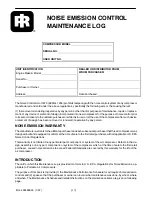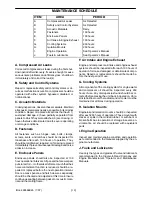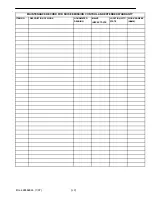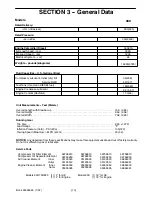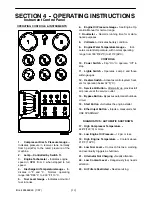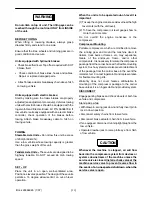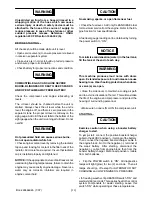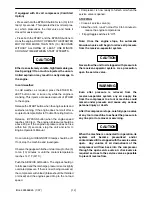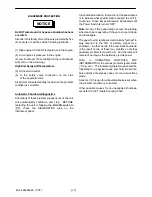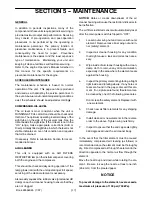
28
( )
Book 22464945 (1/07)
The air cleaner system (housing and piping) should be
inspected every month for any leakage paths or inlet
obstructions. Make sure the air cleaner mounting
bolts and clamps are tight. Check the air cleaner hous-
ing for dents or damage which could lead to a leak. In-
spect the air transfer tubing from the air cleaner to the
compressor and the engine for holes.
Make sure that all clamps and flange joints are tight.
GAUGES
The instruments or gauges are essential for safety,
maximum productivity and long service life of the ma-
chine. Inspect the gauges and test any diagnostic
lamps prior to start--up. During operation observe the
gauges and any lamps for proper functioning. Refer to
Operating Controls & Instruments for the normal read-
ings.
FUEL TANK
This unit is equipped with tank that can be filled from
front of unit. Using clean fuel in the fuel tank is vitally
important and every precaution should be taken to en-
sure that only clean fuel is either poured or pumped
into the tank.
Every six months the drain valve should be opened so
that any sediment or accumulated condensate may be
drained. When closing the valve, make sure it is fully
closed and does not leak.
BATTERY
Keep the battery posts--to--cable connections clean,
tight and lightly coated with a grease. Also the electro-
lyte level in each cell should cover the top of the plates.
If necessary, top--up with clean distilled water.
TIRES
A weekly inspection is recommended. Tires that have
cuts or cracks or little tread should be repaired or re-
placed. Monthly check the wheel lug nuts for tight-
ness.
AUTOMATIC SHUTDOWN SYSTEM
The discharge air temperature switches will require
approximately 248
°
F (120
°
C) to actuate. The engine
coolant temperature switch will require approximately
215
°
F (102
°
C) to actuate. Replace any defective
switch before continuing to operate the unit.
A low oil pressure switch may be tested by removing it
and connecting it to a source of controlled pressure
while monitoring an ohmmeter connected to the switch
terminals. As pressure is applied slowly from the
controlled source, the switch should close at 12 psi
(.84 kgf per cm 2) and show continuity through the
contacts. As the pressure is slowly decreased to 8 psi
(0.56 kgf per cm2) the contacts should open and the
ohmmeter should show lack of continuity (infinite
ohms) through the contacts. Replace a defective
switch before continuing to operate the unit.
COMPRESSOR OIL COOLER
The compressor lubricating and cooling oil is cooled
by means of the fin and tube--type oil cooler, located
beside the radiator. The lubricating and cooling oil,
flowing internally through the core section, is cooled by
the air stream from the cooling fan flowing past the
core section. When grease, oil and dirt accumulate on
the exterior surfaces of the oil cooler, its efficiency is
impaired.
Each month it is recommended that the oil cooler be
cleaned by directing compressed air which contains a
nonflammable safety solvent through the core of the
oil cooler. This should remove the accumulation of
grease, oil and dirt from the exterior surfaces of the oil
cooler core so that the entire cooling area can transmit
the heat of the lubricating and cooling oil to the air
stream.




